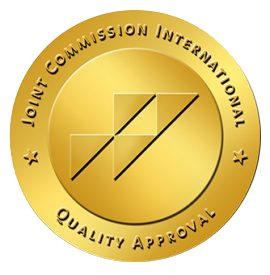
Heart health: should I be concerned?
What makes our heart vital for life?
The human heart is an organ that pumps blood throughout the body via the circulatory system, supplying oxygen and nutrients to the tissues and removing carbon dioxide and other wastes.
Can the heart suffer from certain defects, and who is mostly at risk?
Like any other organ, the heart may suffer from disorders that have several causes such as: genetics, high cholesterol levels, smoking, and diabetes. Angina (chest pain), is one of first warning signs that is experienced; this occurs when there is a decrease in the level of oxygen.
Both men and women are at equal risk of developing heart diseases, however, men are likely to be diagnosed when they are 45 years old, whereas, women are likely to be diagnosed when they are 55. In addition to the hormonal protection in women, their symptoms are usually misdiagnosed as other conditions, mainly stress, this is why the mortality rate of women is much higher than that of men.
Who is advised to get checkups?
In general, those who have a family history of heart diseases or of any other condition such as diabetes or hypertension, are advised to get regular checkups as they have a higher risk at a younger age. However, starting to get regular check ups at the age of 40 and above is still recommended even if there are no signs or symptoms of a heart condition. Additionally, it is highly recommended to take preventive measures against heart diseases through:
– Smoking cessation,
– Improving diabetes if present
– Engaging in a healthier lifestyle (food and exercise).
What are the different steps of the assessment process?
The first step, in the clinical assessment of heart disease, starts at the physician’s clinic with history taking and a comprehensive physical exam. This is likely the cause of 90% of misdiagnoses, when not taken thoroughly and with care. Thus, it is vital for the doctor to take the following metrics cautiously.
The second step is to undergo ordered tests, which include:
– Blood profile: total cholesterol, HDL, LDL, glucose and HbA1c; especially in case of a family history of diabetes.
– Blood pressure monitoring: hypertension is a silent killer. It is usually noticed by symptoms such as chronic headaches, indicating damage in the brain’s veins.
With the results obtained from the first two steps, the physician will decide on the following diagnostic plan based on the potential heart condition according to the following 4 categories:
1- Electrical Problems
A condition known as “hypertrophic cardiomyopathy” is the most common cause of death among adolescents. The heart muscle is thicker between the left ventricle and the aorta, hence blocking the passage between the two areas until the heart can no longer pump blood.
Only 1% of these cases are dangerous and could lead to sudden death at any age and the remaining 99% are harmless. An electrocardiogram (ECG) is the best preventive measure for this condition.
2- Congenital Heart Diseases
This is a malformation of the heart during its developmental phase in the embryo, it can be initiated by a fever, infection, inflammation or medication taken during pregnancy. There are three different types:
– A hole between the right and left atria
– Transposition of the heart: the right side develops on the left and vice versa
– Transposition of the arteries between the right and left sides of the heart
Nevertheless, congenital heart conditions can be diagnosed while the baby is still in the womb, and corrective measures to save the baby’s life can be made with the assistance of a maternal fetal medicine specialist.
3- Heart Valve Defects
The heart valves split the heart into 4 chambers and separate them from the arteries.
– The pulmonary artery goes to the lungs. It is in the frontal side with a very thin wall, hence, it is the first part to be damaged during a car accident.
– The main aorta goes to other parts of the body, and it is protected behind the pulmonary artery.
Enlargement is the most common defect seen in the aorta, it is mainly due to hereditary causes, and may lead to sudden death. CT Scans are the gold standard preventive measure for this condition.
4- Heart Muscle Defects
The main problem affecting the heart muscle is weakness that can be caused by several different factors:
– Blockage of the arteries or veins
– Hypertension
– Infections, usually initiated by fever at a young age (5-10 years). Even if the adequate treatment is given, the heart will develop a scar which enlarges with time.
These triggers could lead to the development of different diseases, decreasing the power of the heart muscle to below 35%, and increasing the risk of sudden death by 7%. This condition is usually treated by implanting a defibrillator beneath the skin, to shock the heart in case of a cardiac arrest.
In 2003, MLH started a new procedure called advanced mapping and ablation therapy to treat these conditions, since most cases are unresponsive to medical therapy. The main diseases that fall under this category are:
– Degeneration of the valve, which occurs with age
– Calcification of the main aortic valve
– Loosening of the mitral valve
ECG and the MRI are the gold standard tests for the existence and diagnosis of such conditions.
What are the other types of assessments available, and when are they conducted?
There are some tests that are usually used when further assessment is needed for a better understanding of the condition of the patient, including:
– Stress tests: if the condition is not conclusively linked to being caused by a heart defect. The patient is put on a machine (treadmill or bike) to measure the degree of effort that is exerted on the heart. This can be done in 3 different ways:
o The regular stress test: when the person can move around
o Coupled test: stress test with ECG (young females or people suffering from a health condition like asthma)
o Stress and nuclear scan test: medicine is given to the patient and followed in the body. This test is used in the case of obesity, or if the patient cannot move.
– CT scans: usually conducted for the heart or the arteries in case of a suspected blockage.
– CMR (Cardiac Magnetic Resonance): a heart specific MRI. This is the preferred test for conditions of high sudden death risk (hereditary diseases, weak muscle, or infection).
– Holter Monitor: used to follow the frequency and intensity of the palpitations events.
– Tilt test: used to check the source of the vertigo, whether caused by a heart weakness or a vagal nerve defect, which could slow down heart rate when activated. At MLH, Tilt test is combined with an EEG to check if the brain is triggering the dizziness.
Your heart is a very important organ that you use for all your daily activities. Do not underestimate the amount of work it does for you, cherish it and take good care of it through regular checkups, routine testing and following your doctor’s instructions. It is the organ that keeps you alive and kicking!
Dr. Samer Nasr
Cardiologist
Electrocardiogram Specialist
Leave a reply







